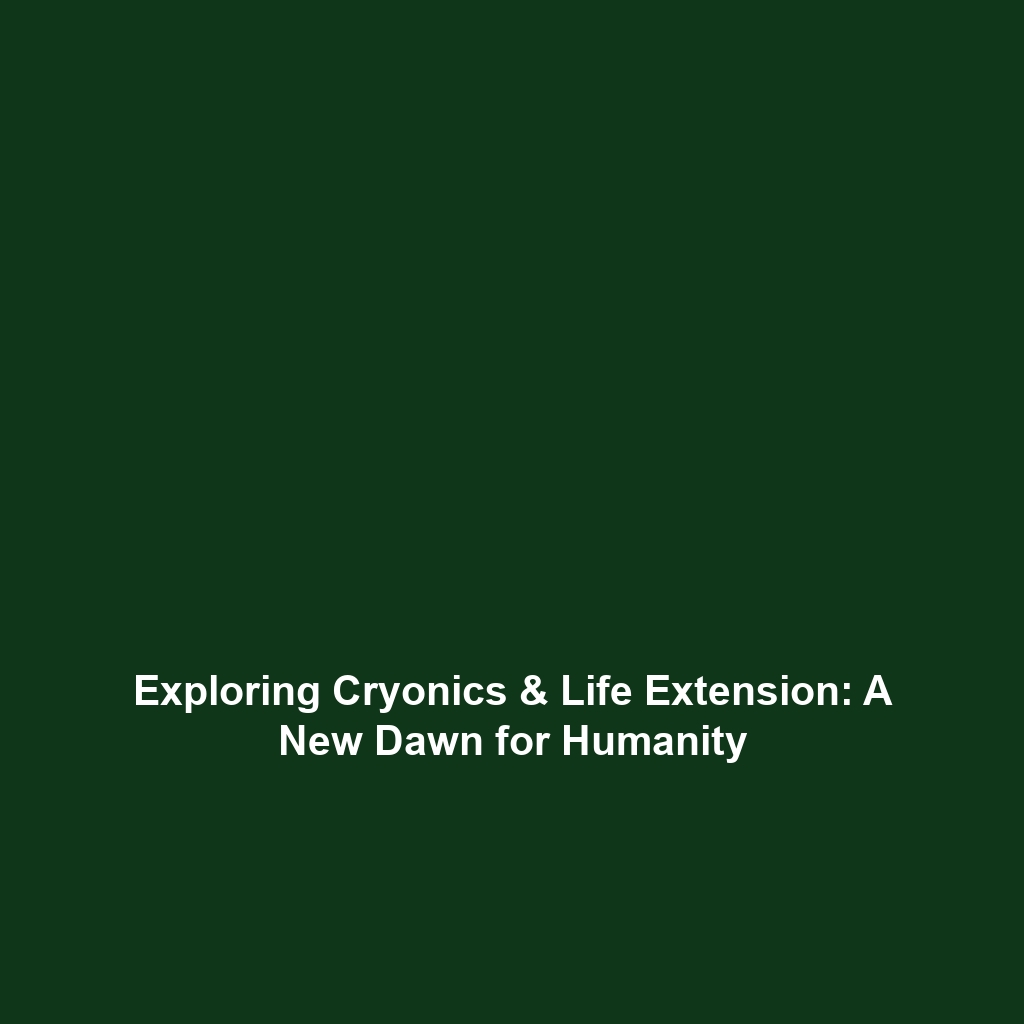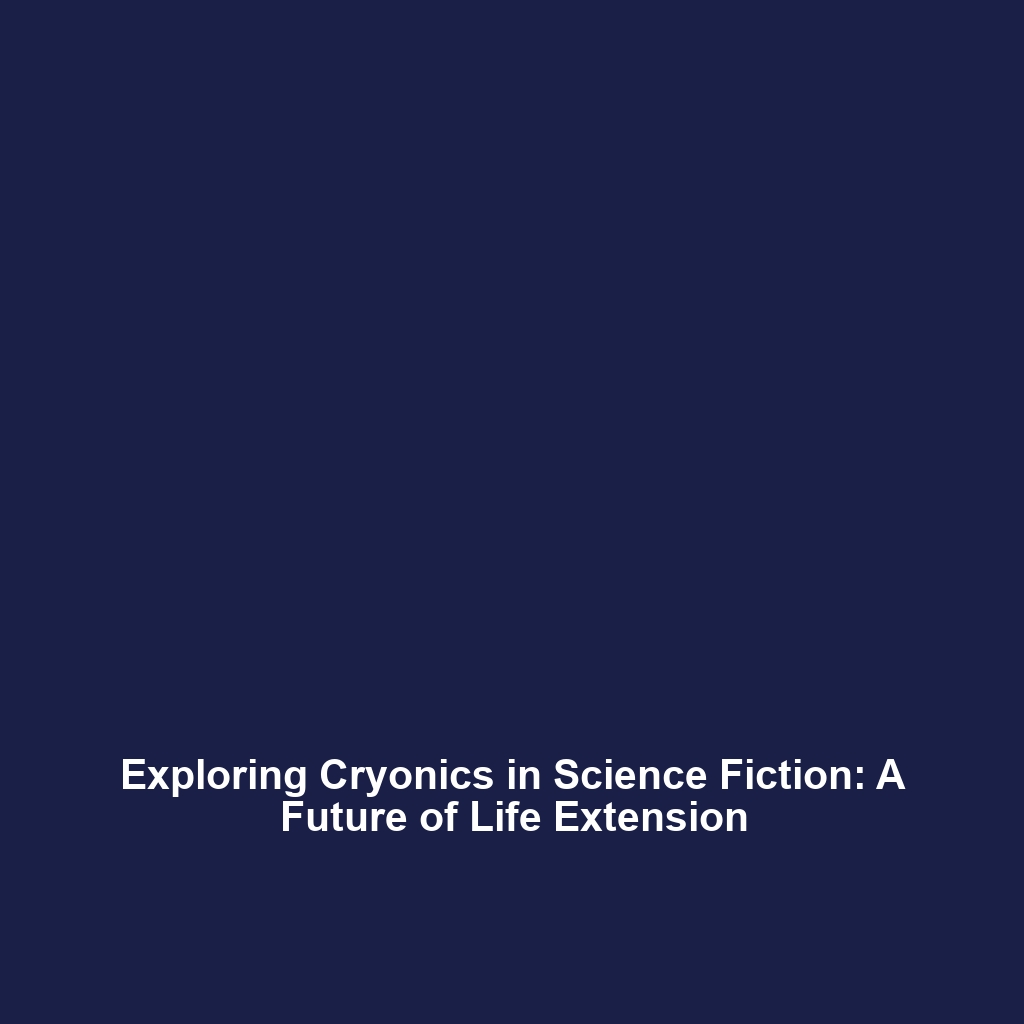What is Cryonics?
Introduction
Cryonics is a fascinating field that holds promise for life extension through preservation techniques that could one day allow for revival after death. As a scientific practice, cryonics seeks to halt cellular decay by cooling patients to sub-zero temperatures, offering hope for future medical advancements. In the broader context of cryonics and life extension, it garners significant interest from researchers and individuals alike, aiming to transcend the limitations of aging and mortality. This article explores the essence of cryonics, shedding light on its importance, key concepts, applications, challenges, and future innovations.
Key Concepts
The concept of cryonics revolves around several fundamental principles that collectively aim to preserve life at its most critical moment. Key concepts include:
- Vitrification: The process of turning biological tissue into a glass-like state to prevent ice crystal formation.
- Legal Death: Understanding the definition of death as determined by medical professionals, marking the start of the cryonics process.
- Temperature Management: Maintaining a consistent low temperature to minimize cellular damage after death.
These principles not only frame the scientific basis of cryonics but also situate it firmly within the life extension discourse.
Applications and Real-World Uses
The applications of cryonics extend beyond theoretical constructs into practical implementations. Notable uses include:
- Patient Preservation: Patients diagnosed with terminal conditions may choose cryonics to preserve their bodies for future treatments.
- Research Studies: Scientific studies investigate the effects of cryopreservation on various biological tissues to improve methods.
- Ethical Discussions: Cryonics prompts discussions on the ethical implications of extending life and its societal impacts.
These applications demonstrate how cryonics is used as a vital component of life extension strategies, prompting ongoing scientific inquiry and public interest.
Current Challenges
Despite its potential, cryonics faces several challenges that hinder its widespread adoption and effectiveness:
- Scientific Uncertainty: The long-term outcomes of cryonics remain unproven, making it a controversial subject.
- Legal and Ethical Issues: The debate surrounding consent, legal death, and moral implications complicates the practice.
- High Costs: The financial burden associated with cryonics procedures limits accessibility for many individuals.
Future Research and Innovations
Looking ahead, the field of cryonics is poised for significant advancements. Upcoming research focuses on:
- Improved Vitrification Solutions: Developing more effective cryoprotectants to enhance cellular preservation.
- Nanotechnology: Utilizing nano-scale technologies to repair damage caused during the freezing process.
- Regenerative Medicine: Integrating cryonics with stem cell research to optimize revival processes.
These innovations hold the potential to redefine our understanding of life extension and the possibilities of reviving preserved individuals.
Conclusion
In summary, cryonics represents a groundbreaking approach to life extension with its foundational principles, practical applications, and challenges that require further exploration. As research continues to evolve, the hope for future innovations offers a glimpse into the potential of extending human life beyond current limitations. For those intrigued by cryonics and life extension, it is essential to stay informed about advancements in this field. Explore more about the implications of cryonics in our articles on Life Extension Technologies and Scientific Ethics.






